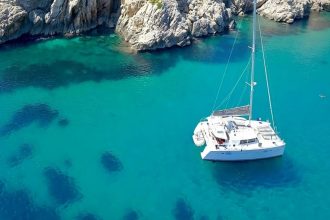From the thundering roar echoing through ancient canyons to the heart-pounding rush of water cascading over submerged boulders, river rapids stand as nature’s most exhilarating playgrounds. These aren’t merely stretches of turbulent water; they represent a primal challenge, a symphony of geology and hydrology, beckoning adventurers to test their mettle against the river’s raw, untamed power. For generations, the allure of whitewater has captivated human spirit, drawing us into a dynamic dance where every stroke of the paddle, every shift in current, tells a compelling story of nature’s formidable artistry and the remarkable human endeavor to conquer it.
Understanding what truly defines a rapid is the crucial first step toward appreciating its profound impact on both the landscape and the intrepid souls who navigate its depths. Essentially, a rapid is a section of a river where the gradient significantly increases, causing an acceleration of the water’s flow and creating considerable turbulence. This dramatic transformation is typically instigated by geological features such as exposed bedrock, boulders, ledges, or constrictions that impede the river’s otherwise smooth progression, forcing the water into a mesmerizing, yet often perilous, ballet of waves, holes, and eddies. It’s an elemental force, shaping both the land and the spirit of those who dare to venture forth.
Delving deeper into the mechanics and classifications of these magnificent river features provides an essential framework for any aspiring or seasoned rafter. The International Scale of River Difficulty, universally adopted, categorizes rapids from Class I to Class VI, offering a clear guide to their inherent challenges and required skill levels. This system, meticulously developed over decades, allows rafters to assess risks, prepare adequately, and ultimately, engage with the river responsibly, ensuring both safety and an unforgettable adventure.
Aspect
Description
Key Considerations
What is a Rapid?
A dynamic section of a river where the gradient significantly increases, causing an acceleration of water flow and turbulence due to obstacles like rocks, ledges, or constrictions. It’s a hydrological phenomenon where potential energy converts into kinetic energy and intense friction.
Formed by geological features (e.g., bedrock, boulders) and the relentless push of hydrological forces.
International Scale of River Difficulty
A standardized system (Class I to VI) used worldwide to categorize the technical difficulty, inherent danger, and required skill level for navigating river rapids.
Essential for trip planning, safety assessments, equipment selection, and guide qualifications. Always consult local river guides and resources.
Class I (Easy)
Smooth water with very small waves, few obstructions (easily avoided). Minimal risk; self-rescue is simple.
Ideal for beginners, families, and leisurely floats, often requiring minimal paddling effort.
Class III (Intermediate)
Moderate, irregular waves; strong currents; complex maneuvers required. Significant obstacles easily avoided by skilled paddlers.
Requires some rafting experience, good paddling skills, and basic boat control; Guide presence is often recommended.
Class V (Expert)
Extremely long, violent, and obstructed rapids. High risk, complex maneuvers, significant drops, and unavoidable hazards. Rescue is exceptionally difficult and dangerous.
Only for highly experienced rafters with specialized equipment, extensive training, and a deep understanding of swiftwater rescue. Expert guides are mandatory.
Safety Essentials
Always wear a U.S. Coast Guard-approved Personal Flotation Device (PFD), helmet, and appropriate footwear. Go with experienced, certified guides or reputable outfitters. Know your limits and respect the river’s power.
Never raft alone. Always scout unknown rapids. Maintain communication within your group. Proper training and preparedness are paramount.
Reference Link
American Whitewater ー Safety & Education
A comprehensive resource for whitewater safety, river information, and conservation efforts across the United States.
Geologically, rapids are often born from differential erosion, where softer rock layers erode faster than harder ones, creating steps or ledges. Alternatively, tectonic activity can uplift bedrock, forming natural dams or constrictions. Hydrologically, the volume and velocity of water play critical roles; a higher flow can transform a moderate rapid into a formidable challenge, intensifying waves and creating powerful hydraulic features like “holes” — standing waves that can trap boats. Understanding these intricate interactions allows rafters to read the river, anticipating its movements and planning their precise line through its frothing heart. By integrating insights from detailed hydrological data and geological surveys, expert guides can predict river behavior with astonishing accuracy, enhancing both safety and the sheer enjoyment of the journey.
The experience of confronting a rapid is truly transformative, a powerful blend of fear, focus, and ultimate triumph. As the raft plunges into the whitewater, paddlers become acutely aware of their surroundings, their senses heightened by the roar of the water and the spray on their faces. It demands not just physical exertion but also unwavering teamwork, precise communication, and an almost intuitive connection with the river’s flow. Surviving a particularly challenging rapid isn’t merely about physical prowess; it’s a testament to mental fortitude, collective synergy, and a profound respect for nature’s raw, unbridled might. Industry leaders like O.A.R.S. and Wilderness Aware Rafting consistently emphasize the importance of experienced guides, top-tier equipment, and rigorous safety protocols, ensuring that even the most daunting rapids are navigated with professionalism and care;
Looking ahead, the future of river rafting is incredibly promising, driven by advancements in equipment technology, enhanced safety training, and a growing global community dedicated to responsible outdoor recreation. As more people seek authentic, immersive experiences away from digital distractions, the allure of the river will only intensify. Moreover, ongoing conservation efforts, spearheaded by organizations like American Whitewater, are actively working to preserve these invaluable natural resources, ensuring that future generations can continue to experience the thrill of the rapids. From innovative raft designs providing greater stability to sophisticated communication systems enhancing group safety, every facet of the sport is evolving, making whitewater adventures more accessible and enjoyable for a broader audience. Embrace the call of the wild; the river awaits your paddle, promising not just a ride, but an unforgettable journey of discovery and exhilaration.





